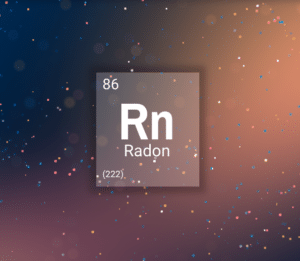Understanding Radon, its Prevalence, and How it Affects You
Radon is a colorless, odorless, and tasteless gas found in homes and buildings. It’s in the air we breathe and in the ground beneath our feet. It can get trapped inside our homes, schools, and workplaces causing our health to be at risk, especially if we inhale it for an extended period of time. The EPA has determined that concentrations of more than 4.0 picocuries per liter of air (pCi/L) represent a serious health risk.
Understanding Radon Gas
Radon is a radioactive element that is part of the radioactive decay chain of naturally occurring uranium in soil. Radon gas from soil can enter buildings through gaps and cracks in the foundation or through crawl spaces. According to the U.S. Environmental Protection Agency (EPA), studies find direct evidence linking radon in homes to lung cancer. It is especially dangerous because you can’t see it, smell it or taste it. Unlike carbon monoxide and many other home pollutants, radon’s adverse health effects occur over time with frequent exposure to high levels of radon gas.
Prevalence of Radon
Radon can be found all across the U.S., with varying concentrations depending on local geology and building conditions. It is present indoors and outdoors. However, it is the indoor concentration levels that concern us most because studies have shown a link between breathing high concentrations of radon and incidence of lung cancer. The EPA has mapped out Radon Zones across the country to show areas with the potential for elevated radon levels to target their resources and implement radon-resistant building codes. No matter where you live, you should test your home for radon.
Radon Levels and Action Threshold
Picocuries per liter of air, a unit of radioactivity, are used to measure radon levels. The action limit for radon has been set by the EPA at 4 Picocuries. If the radon level is 4 Picocuries or higher, it is advised that dwellings be corrected.
However, radon levels less than 4 pCi/L still pose some risk for radon induced lung cancer.
The unseen nature of radon makes it a silent threat to our health and well-being. But with knowledge comes power—the power to test, mitigate, and ensure the spaces we live, work, and play in are safe from high radon levels.
Don’t leave it to chance; take action today. Schedule an appointment with PROFESSIONAL RADON SYSTEMS to gain peace of mind.








